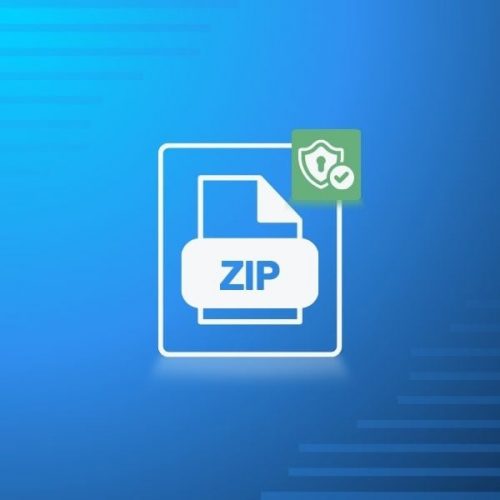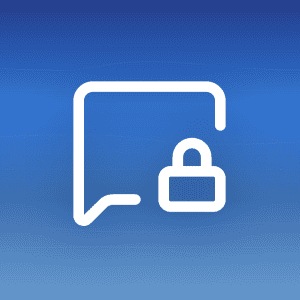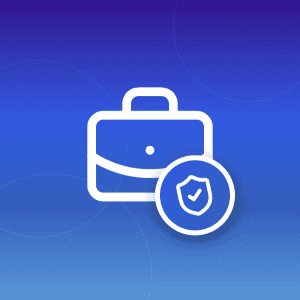Whether you’re sharing sensitive documents or archiving personal files, knowing how to encrypt a ZIP file can protect your data from prying eyes.
In this guide, we’ll walk you through everything you need to know about encrypting ZIP files, step-by-step, using different operating systems and tools. Let’s explore.
Get the latest privacy news in your inbox
Sign up to the Mailfence Newsletter.
What Does It Mean to Encrypt a ZIP File?
Q: What does encrypting a ZIP file do?
Encrypting a ZIP file means protecting it with a password. The contents are scrambled using cryptographic algorithms and can only be accessed by entering the correct password. This prevents unauthorized access, even if someone intercepts the file.
Why Encrypt a ZIP File?
Q: Why should I encrypt a ZIP file?
Encryption is crucial for:
- Protecting sensitive information like financial documents, legal files, or medical records.
- Securely transferring files via email or cloud storage.
- Meeting compliance requirements such as GDPR, HIPAA, or ISO standards.
- Preventing data breaches if a device is lost or stolen.
Common ZIP Encryption Methods
There are two primary types of ZIP encryption: standard ZipCrypto and AES-256 encryption.
Standard ZipCrypto and AES-256 differ significantly in their level of security and implementation.
- ZipCrypto is an older, legacy encryption method that offers basic password protection but is considered weak by modern standards—it can be cracked using widely available tools in a short time.
- AES-256, on the other hand, is a robust, industry-standard encryption algorithm used by governments and security professionals worldwide. It encrypts data using a 256-bit key, making brute-force attacks virtually impossible with current technology.
While ZipCrypto is widely compatible with default ZIP utilities, AES-256 requires compatible tools like 7-Zip, WinRAR, or PeaZip but provides vastly superior protection for sensitive data.
This is why we recommend you always choose AES-256 encryption for true security.
Let’s now look at how to encrypt a ZIP file practically on Windows, macOS, and Linux.
How to Encrypt a ZIP File on Windows
Windows does not natively support password-protected ZIP encryption using standards like AES-256.
Unfortunately, the built-in compression feature only creates basic ZIP archives without any encryption.
However, Windows does offer an alternative called Encrypting File System (EFS), which encrypts files at the filesystem level, not within the ZIP file itself.
Option 1: Using Windows File Explorer with EFS (Not ZIP Encryption)
- Right-click the file or folder you want to protect.
- Select Properties > Advanced.
- Check Encrypt contents to secure data, then click OK.
Important: This uses Windows’ EFS and is tied to your user account. The encryption does not travel with the ZIP file if you send it to someone else. It’s only secure on your local device and cannot be considered a true ZIP encryption method.
Option 2: Use 7-Zip for AES-256 Encryption
- Download 7-Zip.
- Right-click your file or folder.
- Choose 7-Zip > Add to archive.
- Set the archive format to
zip. - Under Encryption, enter a password and select AES-256.
- Click OK to create a secure, password-protected ZIP file.
This second method provides portable, cross-platform encryption that’s far more secure and appropriate for sharing files.
Encrypting a ZIP File on macOS
macOS doesn’t include a built-in option in Finder to encrypt ZIP files with a password.
However, it does offer alternatives through the Terminal and third-party apps.
While the Terminal method uses weaker ZipCrypto encryption, you can achieve strong AES-256 encryption using apps like Keka, which are better suited for securely sharing sensitive files.
Option 1: Terminal Method (ZipCrypto – Low Security)
If you prefer using built-in tools and don’t want to install additional software, macOS allows you to encrypt ZIP files using the Terminal.
This method uses the standard zip command, which supports password protection. However, it’s important to note that this command relies on ZipCrypto, an outdated and vulnerable encryption method that can be cracked with minimal effort.
While it may suffice for casual use or low-risk files, it’s not recommended for securing sensitive or confidential data. For strong encryption, skip ahead to the Keka method using AES-256.
To use the Terminal method:
zip -e encrypted.zip file.txt
You’ll be prompted to enter and verify a password. The resulting file can be opened on most systems without additional software, but the tradeoff is significantly weaker security.
Option 2: Keka App (AES-256)
For macOS users who need strong encryption, Keka is one of the best free tools available.
It supports AES-256 encryption and creates ZIP or 7z archives that are both secure and portable: ideal for safely sharing sensitive files:
- Download Keka.
- Open the app and set Archive format to
7zorzip. - Enter a strong password and enable AES-256 encryption.
- Drag files into the Keka window to encrypt.
Using Keka ensures your files are protected with industry-standard encryption, making it a far more secure alternative to the default macOS Terminal method.
Encrypting a ZIP File on Linux
Linux users have the flexibility of using both command-line and GUI tools for ZIP encryption.
While the default zip command is readily available, it only supports weak ZipCrypto.
For secure encryption, tools like 7z provide support for AES-256, offering a much stronger layer of protection.
Option 1: Using zip Command (ZipCrypto)
The zip command is included by default on most Linux distributions and allows you to quickly create password-protected archives. However, it uses ZipCrypto, which is not secure by modern standards and can be easily bypassed with cracking tools.
The command line is:
zip -e encrypted.zip myfile.pdfThis method is convenient but should be avoided for any files that require strong security or confidentiality.
Option 2: Using 7z (AES-256)
For strong encryption, the 7z command (from the p7zip-full package) is the preferred choice on Linux. It supports AES-256, allowing you to create password-protected ZIP archives that are far more secure than those made with the standard zip tool.
The command line is:
sudo apt install p7zip-full
7z a -tzip -p -mem=AES256 encrypted.zip myfile.pdfThis approach offers reliable, cross-platform security and is ideal for protecting sensitive files.
Encrypt a ZIP File Using WinRAR
Finally, WinRAR is another powerful tool for encryption:
- Download WinRAR.
- Right-click the file/folder and select Add to archive.
- Choose ZIP as the archive format.
- Click Set Password, then enter your password.
- Check Encrypt file names for added protection.
- Click OK.
Which ZIP Encryption Tool Should You Use?
Q: What’s the best tool to encrypt a ZIP file?
Here’s a comparison based on platform compatibility and encryption strength:
| Tool | Platforms | Encryption | Strength |
|---|---|---|---|
| 7-Zip | Windows, Linux | AES-256 | High |
| Keka | macOS | AES-256 | High |
| WinRAR | Windows, macOS | AES-256 | High |
| PeaZip | Windows, Linux | AES-256 | High |
| Native ZIP | All | ZipCrypto/EFS | Low/Medium |
Risks and Limitations of ZIP Encryption
- Weak Passwords: Avoid short or common passwords.
- Metadata Leaks: Some ZIP tools may expose filenames.
- Compatibility: Not all tools can open AES-256 ZIPs.
- No Recovery: Lost passwords mean lost files.
To avoid as much as possible these risks, consider the following best practices:
- Use strong, unique passwords (12+ characters).
- Share passwords over separate channels (e.g., email + SMS).
- Confirm the recipient has compatible tools (e.g., 7-Zip or WinRAR).
- Use a file hash (SHA-256) to confirm file integrity after.
Mailfence: A Secure Alternative for Encrypted File Sharing
Encrypting ZIP files works, but it has drawbacks. Mailfence eliminates those issues with integrated, secure communications:
- End-to-end encrypted emails
- Encrypted file storage
- No ads, trackers, or profiling
- OpenPGP support for digital signing
- Hosted in Belgium with strong privacy laws
Q: Can I send encrypted files via Mailfence?
Absolutely. Upload your file as an email attachment and encrypt it directly. There’s no need for ZIP utilities, passwords, or extra steps.
Final Thoughts
Encrypting a ZIP file is one of the simplest ways to keep your files safe. But not all methods are created equal. Use tools like 7-Zip, WinRAR, or PeaZip to achieve robust AES-256 encryption, and pair this with secure sharing habits.



